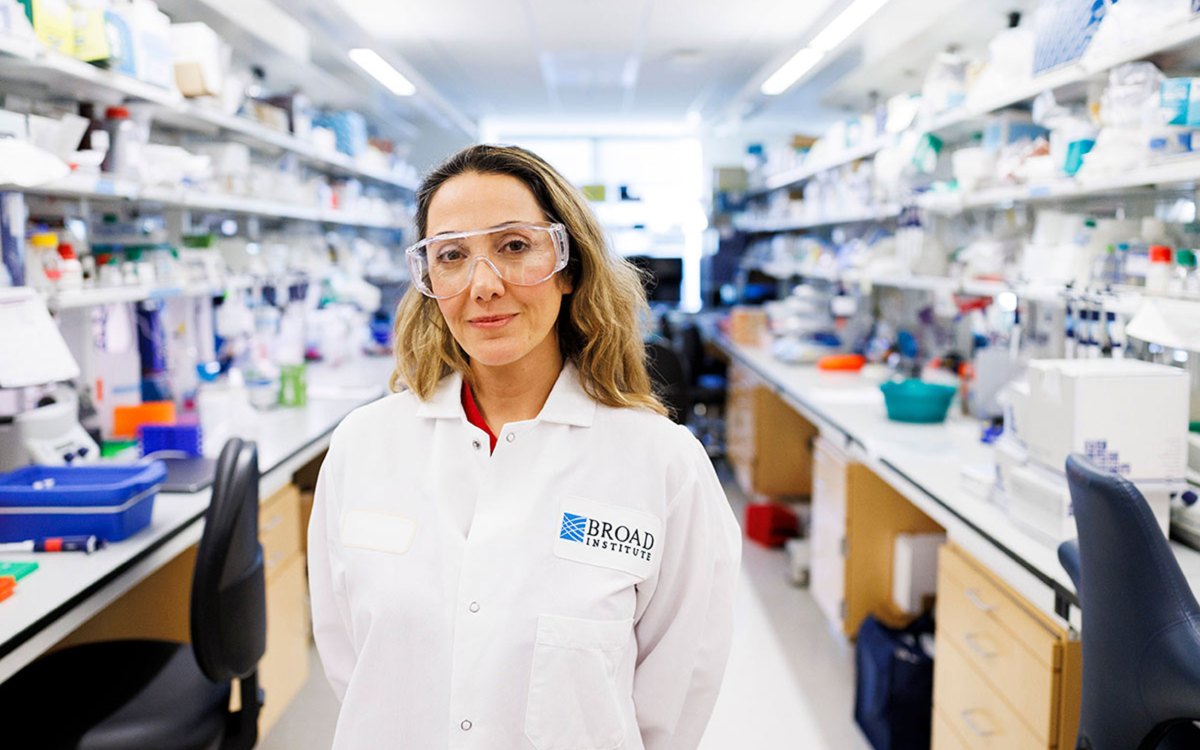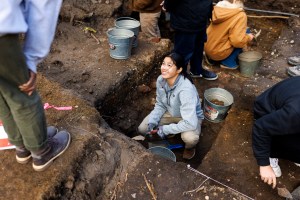Science & Tech
-

-

‘It just feels good when you solve the hard problems’
Why do students volunteer to take this notoriously difficult math exam? For the fun of it.
-

Stopping the next pandemic
Disease surveillance network faced ‘existential cliff’ despite proven success. Then came the $100 million.
-

Rethinking — and reframing — superintelligence
Microsoft researcher says separating AI from people makes systems dangerous and unproductive
-

First, male gets heated up, then female, and then, you know
Study shows infrared radiation from plants serves as invitation to pollinating insects
-

‘Consciousness’
What we know and don’t know about the life of your mind
-
Living in disadvantaged neighborhood equivalent to missing a year of school
Childhood exposure to severely disadvantaged communities is linked to decreased verbal ability later in childhood, a lasting negative effect that continues even after moving out of the neighborhood, according to…
-
Discovery of a key molecular switch regulating cancer stem cells
The role of stem cells in tumor development has, unexpectedly, been one of the biggest stories in cancer research over the past few years. These aren’t embryonic stem cells, but…
-
Chimps in wild appear not to regularly experience menopause
A pioneering study of wild chimpanzees has found that these close human relatives do not routinely experience menopause, rebutting previous studies of captive individuals which had postulated that female chimpanzees…
-
Female lower back has evolved to accommodate strain of pregnancy
According to a new study by researchers at Harvard and the University of Texas at Austin, women’s lower spines evolved to be more flexible and supportive than men’s to increase…
-
Trafficked
Slight and soft-spoken, the dark-eyed girl called Gina looks into the camera and speaks of her ordeal in a flat, disembodied voice, chronicling a story relived a thousand times. “The…
-
From neuroscience to childhood policy
The Center on the Developing Child, founded in July 2006 to promote healthy child development as “the foundation of community development, economic prosperity, and a secure nation,” has been putting…
-
Seabed microbe study leads to low-cost power, light for the poor
A Harvard biology professor’s fascination with seafloor microbes has led to the development of a revolutionary, low-cost power system consuming garbage, compost, and other waste that could provide light for the developing world.
-
Gonzalo Giribet
They had sifted through the forest floor’s leaves and dirt for days, looking for a tiny type of daddy longlegs native to New Zealand, but had little more than dirty…
-
White dwarf ‘sibling rivalry’ explodes into supernova
Astronomers at the Harvard-Smithsonian Center for Astrophysics (CfA) have found that a supernova discovered last year was caused by two colliding white dwarf stars.
-
Holdren talks back to skeptics of global warming
“Global warming is a misnomer,” said John P. Holdren, speaking Tuesday night (Nov. 6) at the John F. Kennedy Jr. Forum at the Kennedy School. “It implies something gradual, uniform, and benign. What we’re experiencing is none of these.”
-
Engineered weathering process could mitigate global warming
Researchers at Harvard University and Pennsylvania State University have invented a technology, inspired by nature, to reduce the accumulation of atmospheric carbon dioxide (CO2) caused by human emissions.
-
The cultural politics of pain, from Percodan to Kevorkian
On a rainy Tuesday afternoon, physicians, historians of science, and members of the general public gathered in the Gymnasium at the Radcliffe Institute for Advanced Study to hear about pain.…
-
Engineered weathering process might mitigate climate change
Researchers at Harvard University and Penn State University have invented a technology, inspired by nature, to reduce the accumulation of atmospheric carbon dioxide (CO2) caused by human emissions. By electrochemically…
-
Foraging for forest frogs
In the dark of the Sri Lankan cloud forest, the researchers’ only guides were the headlamps they used to light up the night, illuminating the cold, gray mist that drifted…
-
Harvard, Japanese science organization sign memorandum of understanding
Officials of Harvard and RIKEN, Japan’s equivalent of the U.S. Department of Energy’s National Lanoratories have October 29 signed a Memorandum of Understanding to encourage and facilitate collaborations between Harvard…
-
Percentage of Katrina survivors with mental disorders increasing
According to the most comprehensive survey yet conducted of people affected by Hurricane Katrina, the percentage of pre-hurricane residents of the affected areas in Alabama, Louisiana, and Mississippi who have…
-
New laser nanoantenna shows unprecedented detail
In a stunning feat of nanotechnology engineering, researchers from Harvard University have demonstrated a laser with a wide-range of potential applications in chemistry, biology, and medicine. Called a quantum cascade (QC) laser antenna, the device is capable of resolving the chemical composition of samples, such as the interior of a cell, with unprecedented detail.
-
Massive black hole smashes record for sizeMassive black hole smashes record for size
Using two NASA satellites, astronomers have discovered a black hole that obliterates a record announced just two weeks ago. The new black hole, with a mass 24 to 33 times that of our sun, is the heftiest known black hole to orbit another star.
-
If not in atmosphere, where does carbon go?
A prominent atmospheric scientist Monday (Oct. 29) called for more research into natural carbon “sinks,” which today absorb almost half of man-made carbon dioxide released into the atmosphere and which will play a large role in determining the extent of future global warming.
-
White dwarf “sibling rivalry” explodes
The new find, supernova 2006gz, was classified as a Type Ia due to the lack of hydrogen and other characteristics. However, an analysis combining CfA data with measurements from The Ohio State University suggested that SN 2006gz was unusual and deserved a closer look.
-
Survey: Med students ill prepared for ethical issues faced in wartime
A new survey of U.S. medical students shows they receive little training about what they should or should not do in wartime, despite ethical questions over physician involvement in prisoner…
-
Mystery comet explodes into brightness
A once-faint comet has made a sudden leap from obscurity tocenter stage. Comet 17P Holmes, now visible to northern hemisphereresidents, increased its brightness by a factor of one million this…
-
Over the river, through the woods
For close to 30 Hyde Park preschool children, a recent trip to the Arnold Arboretum, the majestic 265-acre botanical garden run by Harvard University in Jamaica Plain, meant a journey to a world alive with natural wonders and surprises.
-
Redheaded strangers
Ancient DNA retrieved from the bones of two Neanderthals suggests that at least some of them had red hair and pale skin, scientists report this week in the journal Science.…
-
Harvard science depth, breadth is on display
Five prominent Harvard scientists illuminated the cutting edge of Harvard science, predicting new treatments for old diseases, describing new ways to think about the universe, and hailing advances in our…
-
Forests, reefs, mountaintop illuminate tropical biology
Morning came in the middle of the night in the hikers’ hut partway up the side of Borneo’s towering Mount Kinabalu. At 2 a.m., after just a few hours’ sleep,…
-
Basic understanding of biological clock advances
Writing this week in the journal Science, researchers at Harvard describe what causes a trio of proteins, if placed in a test tube with the common biochemical fuel ATP as…
-
Frankel wins Lennart Nilsson Award
Felice Frankel, scientific imagist and Senior Research Fellow at Harvard’s Initiative in Innovative Computing, has been named the recipient of the 2007 Lennart Nilsson Award for scientific or nature photography.…
-
Nanowire generates its own electricity
Harvard chemists have built a new wire out of photosensitive materials that is hundreds of times smaller than a human hair. The wire not only carries electricity to be used…
-
Yale honors E. O. Wilson with Verrill Medal
Yale honors Wilson with Verrill Medal Pellegrino University Professor Emeritus E.O. Wilson received the Addison Emery Verrill Medal from Yale’s Peabody Museum of Natural History on Wednesday (Oct. 17)…


